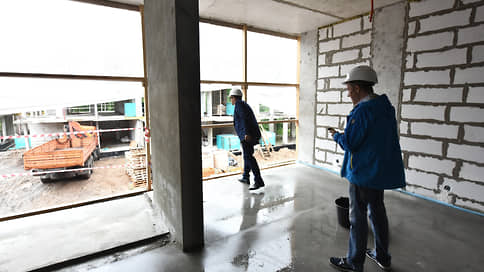41% of apartment building developers intend to enter the individual housing construction market
[ad_1]

The extension of preferential mortgages to individual housing construction (IHC) has stimulated many developers of apartment buildings to think about entering this segment. Currently, no more than 10% of developers are implementing such projects, but another 41% intend to launch similar construction projects in the near future. Experts believe that the massive expansion of companies into the individual housing construction market will be hampered by the high costs of creating infrastructure and low business margins.
Kommersant got acquainted with the results of a survey of 100 top managers of development companies, conducted in February 2024 by the ERZ.RF portal commissioned by the state company Dom.RF. It says that 41% of apartment building developers intend to enter the individual housing construction market in the near future. Another 10% of players are already working in this segment, the remaining 49% of respondents do not yet plan to expand into this segment.
Restrictions during the COVID-19 pandemic have shown an increase in interest in de-urbanization from potential buyers, recalls Stanislav Sagiryan, CEO of RKS Development Group. Against this background, developers of apartment buildings – the PIK, Samolet, Ingrad, LSR, FSK groups – began to enter this market. However, the limiting factors for the development of the suburban real estate market remained the low transport accessibility of sites where low-rise construction is possible, and the limited availability of banking products on the market, adds Mr. Sagiryan.
Now the activity of developers of apartment buildings in the individual housing construction market is associated with the gradual establishment of order in the legislative regulation of this segment, as well as with the introduction of mortgages for private houses, explained the head of the ERZ.RF portal, Kirill Kholopik. Due to the spread of preferential mortgage programs, the individual construction segment has become the fastest growing on the market, says Mikhail Goldberg, head of the Dom.RF analytical center. According to him, in 2023 there was a more than five-fold annual increase in the issuance of loans for the construction of private houses. According to the Unified Information System for Housing Construction (UISHS), in 2023, banks issued 1.3 trillion rubles to Russians. for individual housing construction and the purchase of country houses. The share of mortgage transactions in this segment is 75%, of which 98% of issuances are made under preferential programs, notes Ekaterina Kogan, director of the marketing department of FSK Family.
Individual housing construction can compete with new multi-apartment buildings, predicts Managing Director of Metrium Ruslan Syrtsov. “Offers of suburban housing have begun to seem more interesting to buyers against the backdrop of rising prices for primary housing in cities,” says Sergei Grigoriev, development director of the Golos group. According to the service “We are building. Dom.RF”, now the average cost of building a house of 144 sq. m is 7.8 million rubles. Thus, the average cost per square meter of such housing is 54.5 thousand rubles. At the same time, the cost in new multi-apartment buildings in Russia, according to the UISZhS, reached 164 thousand rubles in February. per square meter. In addition, bills aimed at simplifying the procedure for obtaining permits for individual construction are now being actively discussed, Domklik notes.
Not every entry of large companies into the individual housing construction segment has been successful, says Evelina Ishmetova, director of consulting and development at Key Capital. Despite the huge development area, the volume of individual construction is significantly less than when constructing an apartment building, but there will be large costs for engineering and landscaping, adds Eduard Samigullin, development director of the Zhiloy Kvartal Group of Companies. “The cost of a mistake given the relatively low margins of business in individual housing construction is very high,” warns Olga Magilina, head of the country real estate department of VSN Group.
In addition, it is still difficult to predict the further interest of Russians in living outside the city. Demand was higher during the pandemic, but is now returning to its basic levels, says Vladislav Preobrazhensky, executive director of the Moscow Investors Club. According to him, “the threat of the pandemic has passed,” and forecasts for the growth of remote work places have not come true.
[ad_2]
Source link





